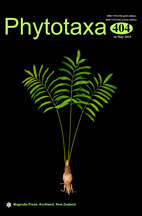Abstract
More or less needle-shaped species of Fragilaria s.s. are difficult to identify. Here we contribute to the taxonomy of this difficult group by describing three species new to science from very low conductivity mountain freshwater environments. Two of the new species resemble taxa established by Kützing in the early 19th century: F. rumpens and F. vaucheriae. Fragilaria spinaspeciosa sp. nov., from a seepage (helocrenic spring) in the northern Apennines, is superficially similar to F. rumpens, but has a lower stria density. Fragilaria tridentina sp. nov. is distinguished from F. gracilis by its smaller length-to-breadth ratio and more closely spaced areolae. Fragilaria vaucheriaeraetica sp. nov. is distinguished from F. vaucheriae and F. microvaucheriae by its outline and denser striae. These last three species also have distinctly different ecologies. Fragilaria vaucheriaeraetica sp. nov. is found in very low conductivity, very low nitrate, ultra-oligotrophic waters, while F. vaucheriae and F. microvaucheriae are found in medium conductivity, high total phosphorus, and relatively high nitrate streams. Accurate species identification and knowledge of each species’ ecological preferences are critically important if diatoms are to be used effectively as indicators of environmental impact and climate change. Weakly buffered, low alkalinity, low nutrient and low conductivity mountain freshwater habitats are sensitive to human disturbance and biotopes for many rare (Red List) diatoms. As such, they serve as valuable early warning systems for detecting the effects of climate change and other human activities.

